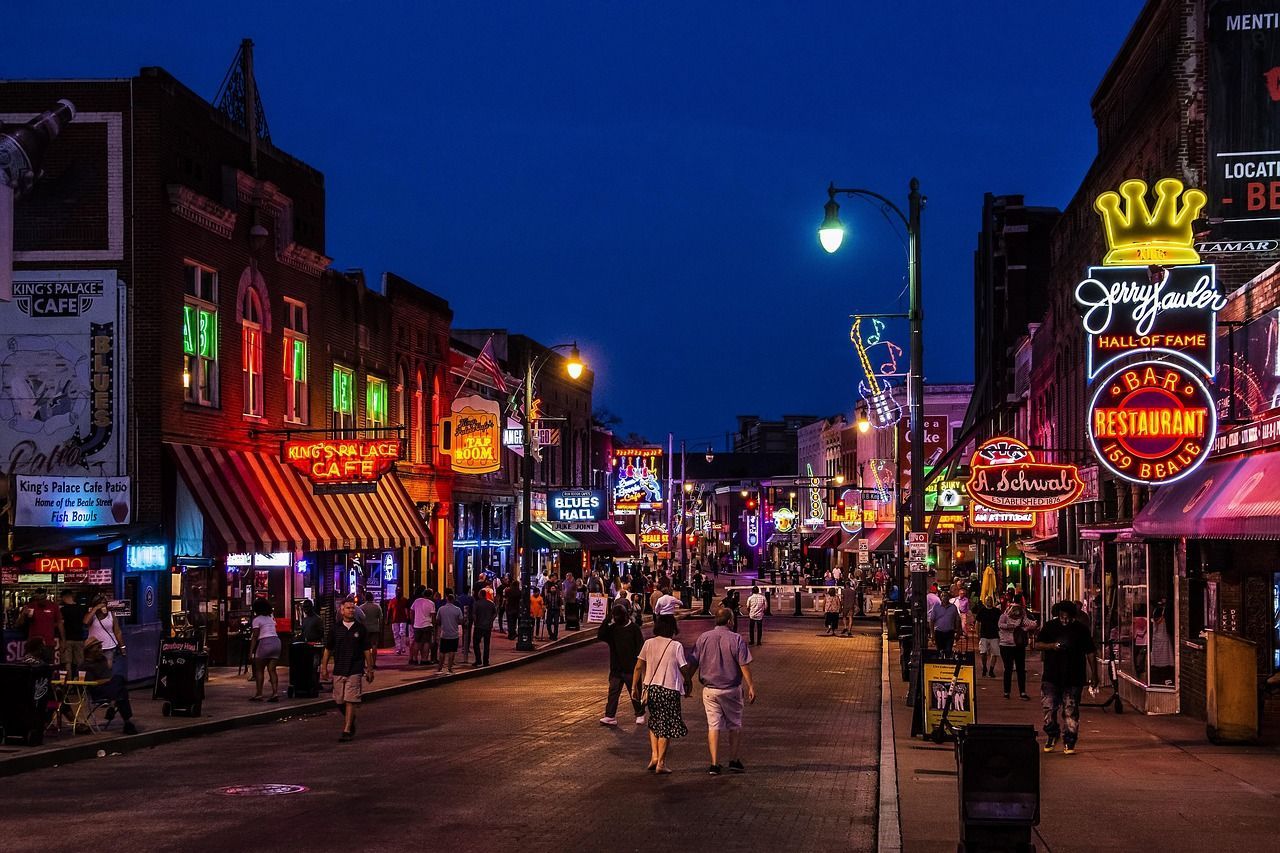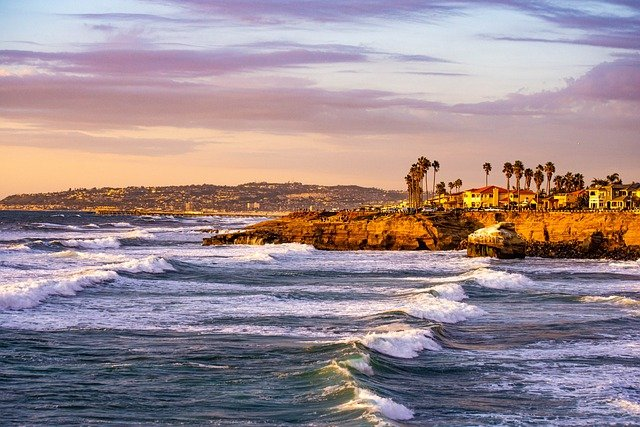Sequoia National Park is a stunning location that is often overlooked in favour of some of the more famous destinations in the area, with many of its attractions flying under the radar.
That is why we decided to create our Sequoia National Park guide, to try and show people a little more about it.
From the best times to visit and how long you will need to see everything, to the best things to do and places to stay when you arrive, we will give you everything you need to plan your dream travel itinerary to California’s oldest national park.
So, if you are planning to explore Sequoia National Park for yourself, I highly recommend reading on.
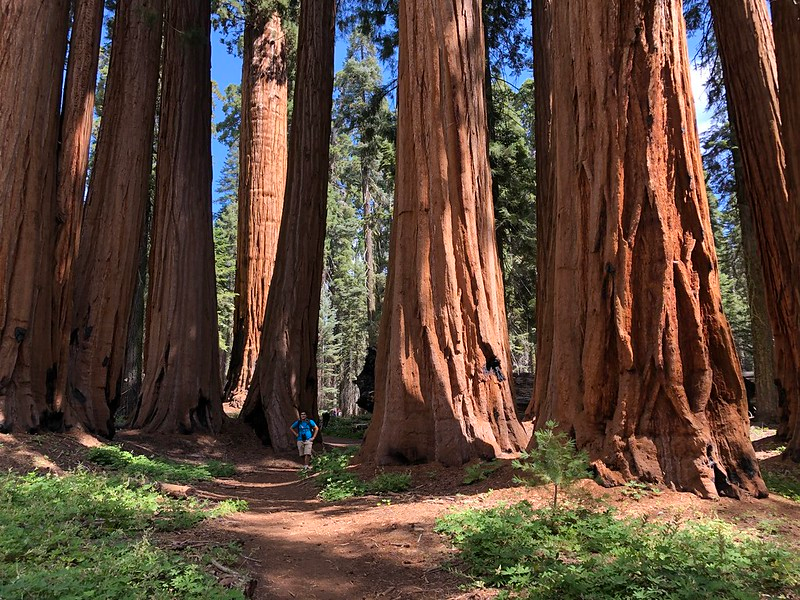
Facts & Figures About Sequoia National Park
Founded on the 25th of September 1890, Sequoia National Park is the second oldest national park in the United States, behind only Yellowstone National Park.
Covering 404,063 acres, it is the 22nd largest national park in the nation, while its 1.06 million annual visitors make it the 26th most visited.
It is home to some notable natural features, which includes the largest tree by volume on Earth, The General Sherman Tree, as well as the tallest mountain in the contiguous United States, Mount Whitney, which stands 14,505 feet (4,421 metres) tall.
Sequoia National Park is connected to Kings Canyon National Park immediately to its north by the Generals Highway.
The two are the only national parks in the country that can be driven between internally and were designated the Sequoia – Kings Canyon Biosphere Reserve by UNESCO in 1976.
Sequoia and Kings Canyon, along with Yosemite National Park, also make up what is known as the Majestic Mountain Loop, a driving route through what is perhaps the most scenic part of the Sierra Nevada mountain range, in which they are all located.
Sequoia National Park Temperature
The Sequoia National Park Temperature usually ranges between a low of 17.2°F (-8.2°C) and a high of 97.1°F (36.2°C). The highest temperature ever recorded in the park is 118°F (48°C) and the lowest is -16°F (-26.7°C).
The highest temperatures in the park occur between mid-May and early October, while the coldest stretch is from early November to the end of April. The temperatures can vary wildly throughout the park, due to the wide range of altitudes it covers.
The park is mostly dry from the start of June to the end of September. It features a reasonable amount of precipitation from early October to the end of May, with heavy snows from late November to early April.

The Wildlife & Landscape Of Sequoia National Park
The landscape of Sequoia National Park is dominated by forests of the old growth giant sequoia trees that the park is named after. These are then broken up by cliffs, mountains, scenic overlooks, meadows, and even cave systems running deep beneath the ground.
These forests are then surrounded by vegetation from 5 different classifications and inhabited by an incredible array of wildlife.
This includes badgers, beavers, black bears, cougars, coyotes, frogs, grey foxes, mule deer, muskrats, opossums, Sierra Nevada bighorn sheep, snakes, turtles, wolverines, and over 200 species of birds, including 11 types of woodpeckers and 3 types of owls.
How To Get To Sequoia National Park
The closest airport to Sequoia National Park is Fresno Yosemite International Airport in Fresno. It is 79 miles (127 kilometres) from the park and takes 90 minutes to reach by car.
For those coming from destinations that don’t fly to Fresno, Los Angeles and San Francisco are also good options.
Los Angeles International Airport (LAX) is 210 miles (335 kilometres) from the park and takes 3 hours 45 minutes to drive to. Meanwhile, San Francisco International Airport lies 265 miles (427 kilometres) away and takes 4 and ¼ hours to drive to from the park.
Best Time To Visit Sequoia National Park
The best time to visit Sequoia National Park is from the start of June to the middle of August. This period covers the warmest, driest period in the park, ensuring you can enjoy all of its natural beauty in the perfect conditions.
It even ensures you avoid the height of California wildfire season, which kicks in near the end of August, and could negatively impact or even completely derail your trip.

Top Attractions In Sequoia National Park
With Sequoia National Park covering such a huge area, it is almost impossible to see every part of it.
That is why we will now look at the top attractions in Sequoia National Park, to ensure you can plan a dream travel itinerary and ensure you don’t miss any of the highlights during your visit.
Marvel At The Size Of The General Sherman Tree
The General Sherman Tree is widely believed to be the largest living tree by volume anywhere on Earth. Easily one of the most iconic points in Sequoia National Park, no trip is complete without snapping a photo of yourself in front of the General.
It stands 275 feet (83.8 metres) tall, is 36 feet (11 metres) in diameter at its base, and has an overall volume of 52,500 cubic feet (1,487 cubic metres). It is also thought to be one of the oldest trees on the planet, estimated to be between 2,300 and 2,700 years old.
In the early years of California’s statehood, people back east thought stories of the massive trees on the west coast were nothing more than a hoax and this behemoth is a perfect example of why.
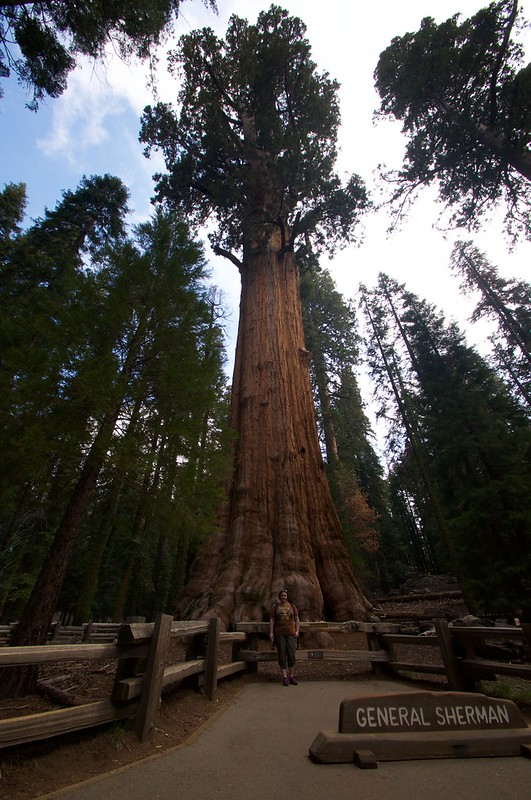
Hike Up The Moro Rock Trail
Moro Rock is one of the best places in all of Sequoia National Park to take in its beauty. A 6,725 foot (2,050 metre) granite dome rock formation, Moro Rock had a stairway carved into its side by the National Park Service in 1931.
Boasting handrails the whole way up, it provides the perfect opportunity for even novice explorers to make the climb to the top of one of the park’s most famous summits and enjoy the views that it offers.
For those who do like to climb though, you can scale the south and east faces of the formation in its entirety, outside of peregrine falcon nesting season.
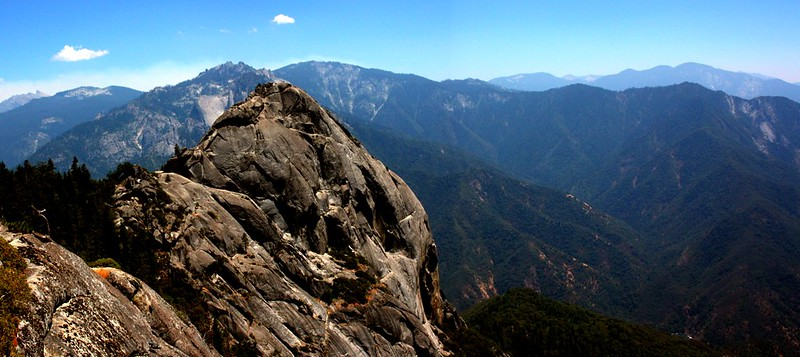
Drive Through Tunnel Log Or Walk Through Tunnel Rock
Tunnel Log is an 8 foot (2.4 metre) tall, 17 foot (5.2 metre) tunnel that was carved through a 275 foot (84 metre) tall, 21 foot (6.4 metre) wide giant sequoia that fell across one of the park’s roads in 1937.
A unique attraction that really puts the size of these incredible trees into perspective, you can take a photo of this incredible feature or embrace the opportunity to drive through it and experience it for yourself.
Just south of Tunnel Log, you then have Tunnel Rock.
A giant boulder that fell across a now disused road to create a granite tunnel, Tunnel Rock is much less visited than Tunnel Log. This means it is much easier to stroll through the tunnel or snap a photo, without other people getting in your way.
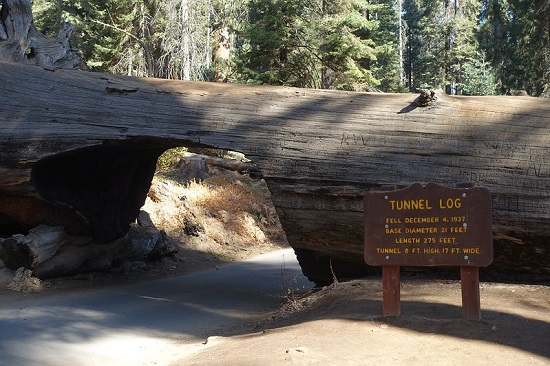
Explore Crystal Cave
At least 3.4 miles (5.5 kilometres) in length, Crystal Cave is the 2nd longest of the 270+ caves located beneath Sequoia National Park and the only one that is open to the public. A marble karst cave, it is known for its temperature which permanently sits at exactly 48°F (9°C).
With regular guided tours available, Crystal Cave is a fabulous opportunity to explore another side of the region’s landscape that differs wildly from most of what you are seeing. It also gives you a great appreciation for the geological diversity of the region.
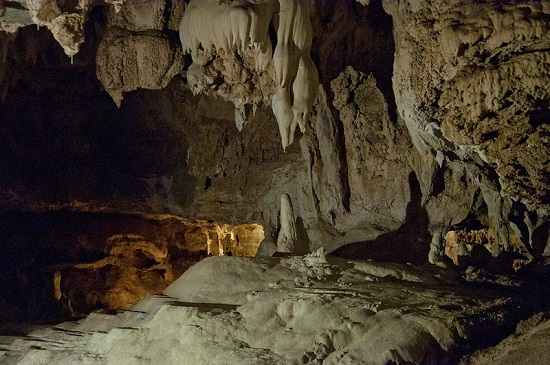
Learn About The Park At The Giant Forest Museum
Located in The Giant Forest region of the park, the Giant Forest Museum is designed to help educate visitors on the ecology and history of the region. Built over 2 years from 1999 to 2001, it covers everything from the forests and meadows to human impact on the area.
With its various exhibits and interpretative trails, the museum will help you to differentiate between the various species of giant trees in the park, appreciate their growth cycles and how long it takes them to reach “full size”, and understand how human expansion has affected this.
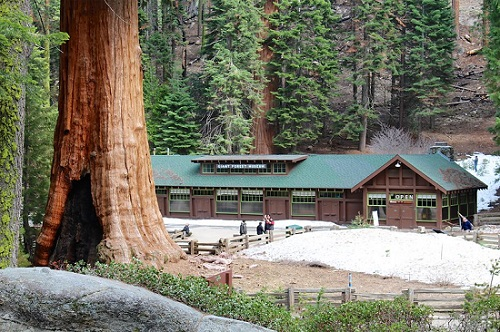
Go Walking Along The Park’s Many Trails
While not technically a single attraction, the many hiking trails located throughout Sequoia National Park may be the highlight of the entire destination, as they allow you to explore the landscape and embrace its beauty and wildlife.
You have options like the Big Trees Trail, Crescent Meadow Loop Trail, and Hazelwood Nature Trail, which are all perfect for even inexperienced hikers to enjoy the scenery.
The Boole Tree Loop Trail, Congress Trail, and Tokopah Falls Trail are then available for slightly more hardened walkers.
You even have options like the Alta Peak Trail and High Sierra Trail, which are only suitable for the fittest, most committed explorers. Whatever type of hike you want to go on though, Sequoia National Park will have a trail perfectly suited to your needs.
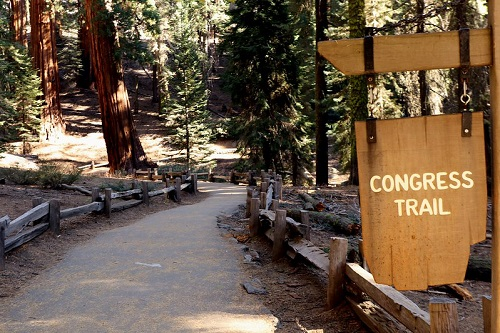
Climb To The Top Of Mount Whitney
Mount Whitney is the highest mountain in the lower 48 states, standing 14,505 feet (4,421 metres) above sea level.
Located on the remote eastern edge of the park, it is most commonly climbed from the adjacent Inyo National Forest but can also be reached from within Sequoia National Park as well.
A trip not for the faint of heart, you will need to set out on a gruelling 60 mile (100 kilometre) hike on the High Sierra Trail to reach the mountain. However, this shouldn’t be enough to deter avid climbers from this fabulous activity.
Not only will you get to climb one of the most legendary and popular mountains in the United States, but you will also get to see some of the most breathtaking panoramic views of California and neighbouring Nevada that you will ever experience.
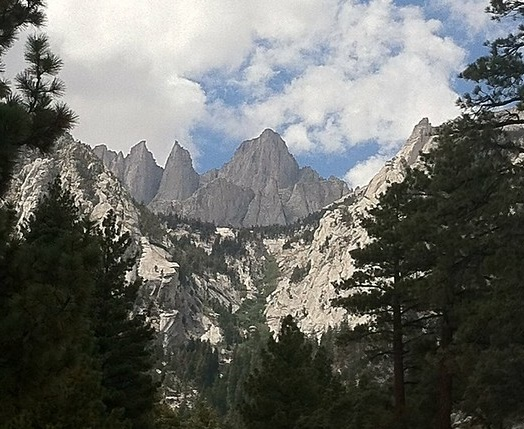
Things To See And Do Near Sequoia National Park
While Sequoia National Park boasts a huge number of sights and sounds for you to enjoy, the area around it has plenty of things to offer as well.
With that in mind, we will now look at some of the best things to see and do near Sequoia National Park, for those seeking a truly comprehensive trip.
Kings Canyon National Park
Kings Canyon National Park is located immediately to the north of Sequoia National Park, with the two being connected by the Generals Highway. The youngest national park in the Majestic Mountain Loop, many of its sections bear a striking resemblance to its neighbour.
That said, Kings Canyon still has plenty to make it stand out. It features various rivers, waterfalls, lakes, caves, and canyons, all set inside one of the deepest gorges in the United States, the eponymous, 8,000 foot (2,440 metre) deep Kings Canyon.
Sites like the “Nation’s Christmas Tree”, the world’s 2nd largest giant sequoia, the General Grant Tree, activities like caving, rafting, and hiking, and a wide range of wildlife like bighorn sheep, bears, marmots, and over 200 types of birds, means there is something for everyone in Kings Canyon.
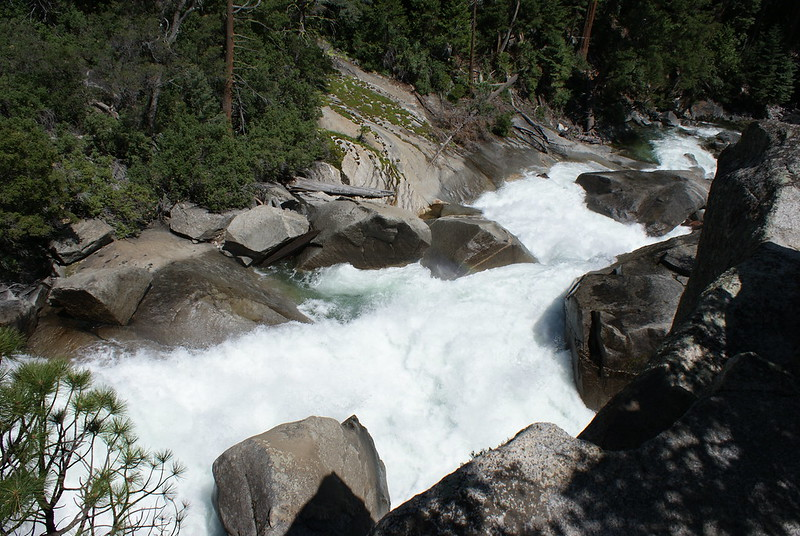
Sequoia National Forest
Sequoia National Forest sits immediately to the south of Sequoia National Park and is, again, dominated by forests of old growth trees.
While many of the most impressive, iconic trees were sectioned off in the national park, the national forest may boast slightly more geographic diversity.
It has rock formations like granite monoliths and needles, as well as six remote wilderness areas, while still boasting 34 separate groves of giant sequoias. Part of the forest even makes up the Giant Sequoia National Monument that was established by President Bill Clinton in the year 2000.
All in all, Sequoia National Forest gives you an opportunity to explore the region while being surrounded by fewer other tourists than you would find in Sequoia National Park.
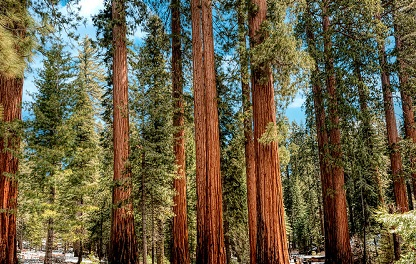
Yosemite National Park
Yosemite National Park is the 3rd oldest national park in the country, as well as one of the world’s most popular natural attractions.
Best known for its collection of waterfalls, which includes the tallest falls in North America, Yosemite Falls, it also has countless meadows, rivers, and lakes.
With additional attractions including the Sugar Pine Railroad and Wawona Pioneer Village, as well as Yosemite Valley and its galleries, museums, and stores, Yosemite National Park gives you the chance to better appreciate human history in the area, while still soaking in some of its most iconic spots.
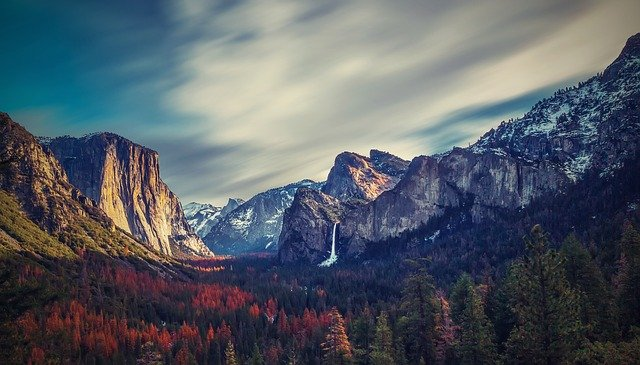
Best Place To Stay Near Sequoia National Park – Montecito Sequoia Lodge
The Montecito Sequoia Lodge is a 4-star hotel in the northwest corner of the park, situated right on the Generals Highway. Each of its spacious rooms is family friendly, filled with comfortable furnishings, and boasts views of the stunning natural surroundings.
Meanwhile, the property itself features an outdoor pool, basketball and tennis courts, a kid’s play area and arts and crafts programs, and a bar, snack bar, and restaurant serving breakfast, lunch, and dinner.
The entire site is covered by free Wi-Fi, while free parking is offered to all guests.
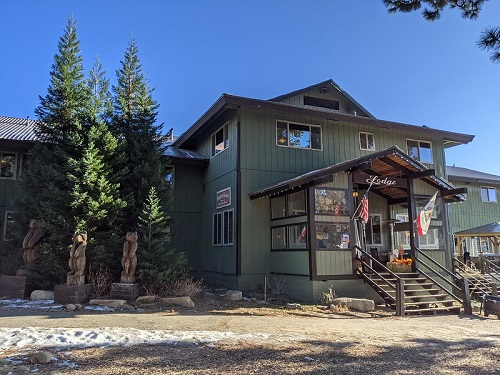
How Many Days To Spend In Sequoia National Park
Many people feel that visiting both Sequoia and Kings Canyon national parks in a single trip and spending 3 days to do so, evenly split between the two parks, is the perfect choice.
However, two days is an ideal amount of time for most people to spend in Sequoia National Park if you plan to only visit one park.
This will give you a full day to visit all of the park’s most prominent attractions, then another to go on some incredible hikes through its breathtaking scenery.
It is also possible to have an enjoyable visit to Sequoia National Park in a single day. You will still be able to see most of the top sights but may have to settle for one or two of the shorter hikes.
Anyone planning to climb Mount Whitney during their visit will, however, need to leave at least a full week for the expedition, with the exact length determined by which direction you plan to descend to from the summit.

Final Thoughts On Our Sequoia National Park Guide
Sequoia National Park is a truly stunning destination and one that perfectly displays the legendary forests of the Sierra Nevada mountains. Our Sequoia National Park guide will hopefully have given you everything you need to explore them for yourself.
From the best time to visit and how long you should stay for to the top attractions you simply have to see and even what you can do in the surrounding areas, you now have all the information to plan your dream travel itinerary.
All you have left to do now then is start getting everything booked. That way, you can start looking forward to experiencing it all for yourself, as soon as possible.
